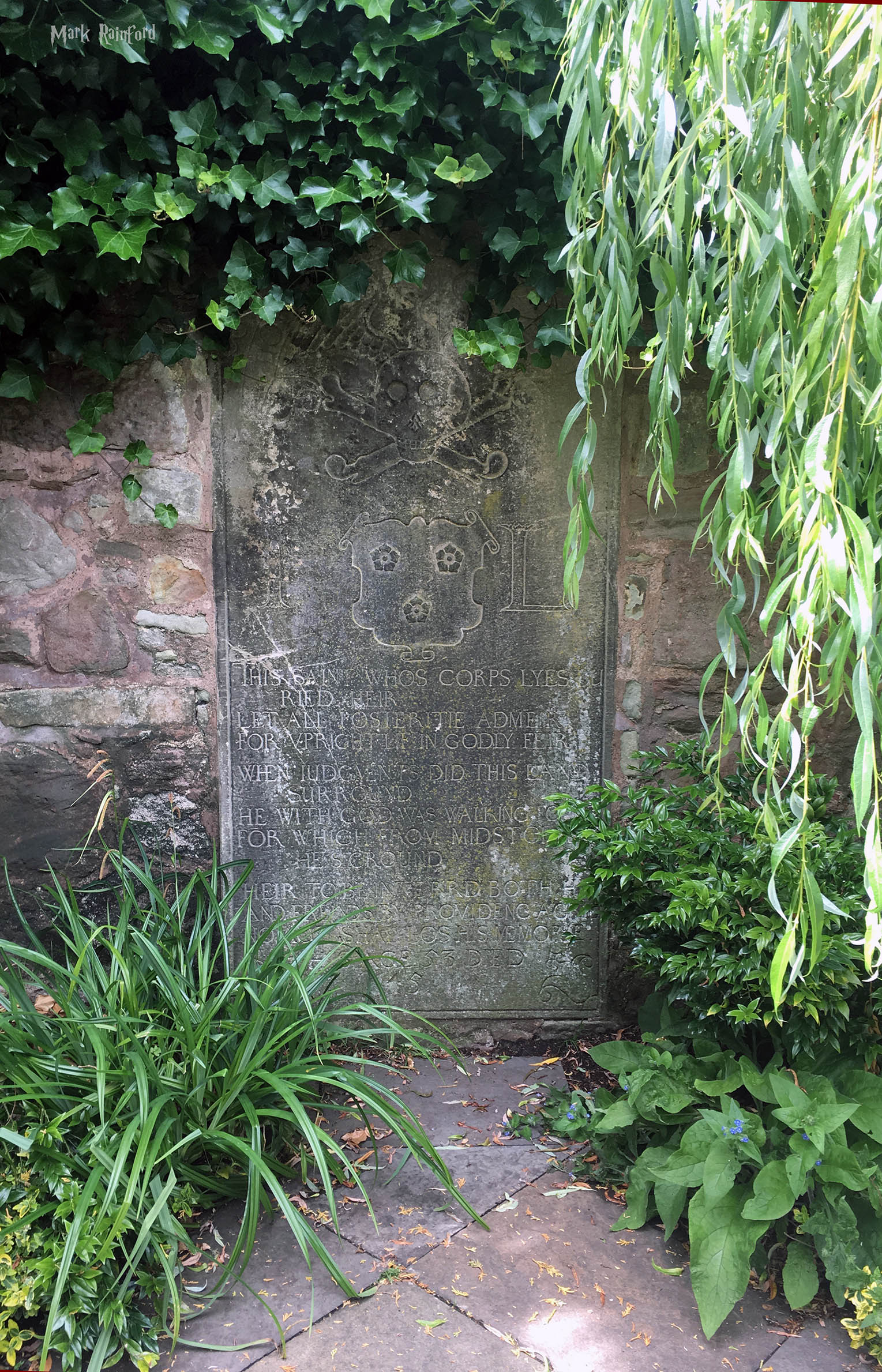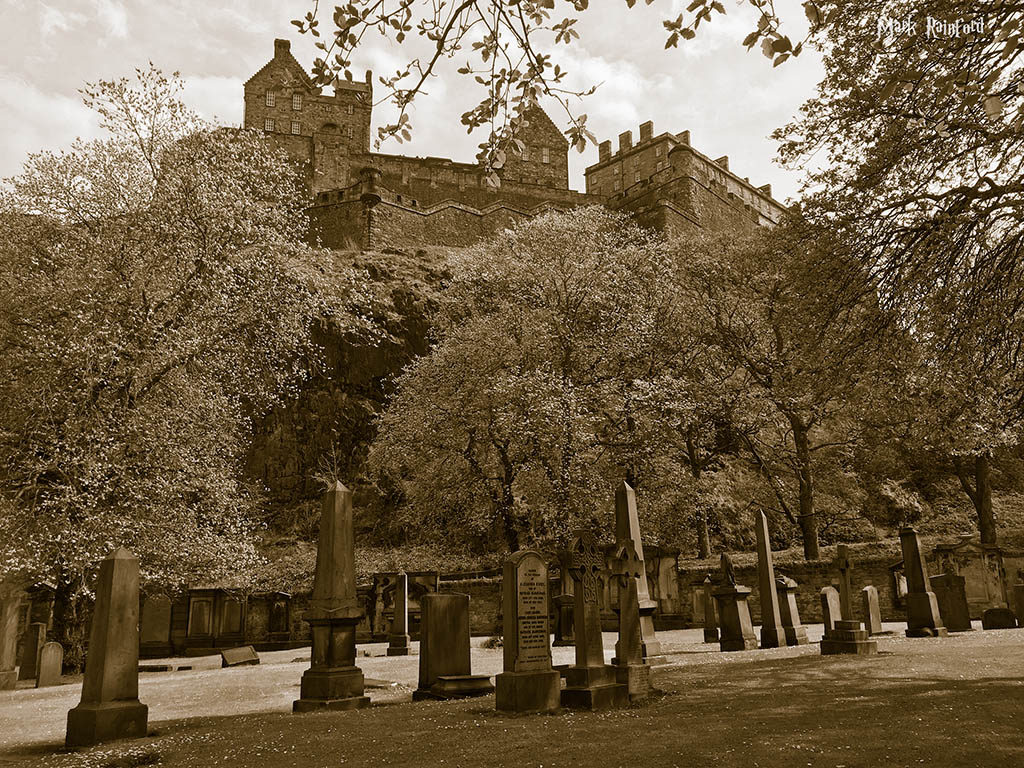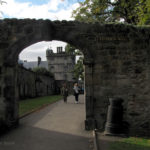The Innocent Railway, opened in 1831 for the purpose of transporting coal from Dalkeith to Edinburgh. Called the Innocent Railway Path as it was originally horse-drawn in a time where steam dangerous were though of as dangerous.
Category Archives: History
Gilmerton Cove
It’s not just Edinburgh’s Old town that has spooky vaults, you can fine one in Gilmerton, about 4 miles southeast of the city. There you will find a wee surprise lurking under the ground.
Gilmerton Cove is a series of underground passageways and chambers hand carved from sandstone, dating from the 18th century. Folklore claims it was the work of an 18th century local blacksmith ‘George Paterson’.
However it’s original use is still a mystery theories claim that it was simply a drinking den for gentry, perhaps a refuge for persecuted Covenanters or smugglers? some even link this site to the Knight Templars (Imaginative folk who haven’t seen a map claim that there could be a secret passage leading to Melrose Abbey)
The University of Edinburgh’s New College
This is the University of Edinburgh’s New College, located on the mound opened in 1846, it’s now the location of the school of divinity. The spire in the middle is the Hub, Home of the Edinburgh International Festival.
On the left is the statue of John Knox who was responsible for the The Scottish Reformation
Fun fact! In 1999 it was the temporary home of the first Scottish Parliament in nearly 300 year
John Livingston’s tomb Bruntsfield
Sometimes one never realizes whats so close.
Chamberlain Road in Bruntsfield there is a little picturesque garden, I pass it often but never venture in.
Today I did, ‘lo and behold’ through the gateway I was surprised to find John Livingston’s tomb.
John Livingston was an apothecary, who acquired land in Greenhill in the 1630’s however he succumbed to the Black Death in 1645, as did much of Edinburgh.
The Tombstone reads
This Saint whos Corps lyes buried heir
Let all posterties admoir
For upright lif in Godly feir.
When judgements did this land surround
He with God was walking found
For which from midst of feirs he’s cround.
Heir to be interred. Both he
And friends by Providence agrie
No Age shall los his memorie.
His age 53 Died 1645
A scroll beats the words “Mors patet, Hora latet” this may be literally translated as “Death Reveals, the hour conceals” but the may mean “Death is sure, the Hour uncertain”
Ross Fountain
The restoration of the beautiful Ross Fountain is now complete! Water flows freely for the first time in eight years. Now sporting its new colour of a bluish-green and copper moving away from it’s all gold colour, paying homage to its sister fountain of Fontaines de la Concorde in Paris.
Ross Fountain was produced at the iron foundry of Antoine Durenne in Sommevoire, France, standing at it’s current position in West Princes street gardens since 1872
Happy to see it fully working again
Queen Mary’s Bathhouse
I love these auld places, I present to you – Queen Mary’s Bathhouse. This 16th century building can be found at the foot of the Royal Mile close to the Palace of Holyroodhouse and the Scottish Parliament.
Folklore says Mary Queen of Scots bathed here, only in sweet white wine! However it is unlikely that it was ever used as a bath house.
once attached to a wall encircling the King’s Privy Garden and it is thought to have been a summer house or even a tennis pavilion.
Linlithgow Palace
Not in Edinburgh but very close, 15 miles from Edinburgh
here is a Panoramic view from the top of Lithograph Palace. in View also St. Michael’s Church, and Linlithgow loch
Linlithgow Palace
Full Gallery over at cludgie
Edinburgh Castle From St Cuthbert’s Kirkyard
Edinburgh has many Gothic and spooky locations, here is a shot of Edinburgh Castle taken from St Cuthbert’s Kirkyard. (with a sepia tone added). St. Cuthbert’s Kirk is thought to be one the oldest site of worship in Edinburgh.
The graveyard of the ‘Kirk below the Castle’ is an intrinsic part of the story of Christianity in Scotland from the Dark Ages onwards, and its establishment during the 8th century predates the first records. Despite its busy city centre location, the site feels secluded and secret.
A Bonny View
The Flodden Wall
The Flodden wall – medieval Edinburgh’s main defensive wall. Enclosing the southern part of the city, through what is today the Grassmarket, Cowgate and Greyfriars, the northern section of the city was defended by the Nor Loch and nobody wanted to dip in to that, it was disgusting.
The newly crowned king of England was up to their usual rhetoric claiming to be overlord of Scotland, then in 1513 Henry VIII of England invaded France, James IV of Scotland reenacted the Auld Alliance and invaded England, Unfortunately this was a mistake and the Scottish army was massacred. James was also killed thus being the last Scottish monarch to die on the battlefield.
This wall was built in fear of an English reprisal, but it’s also the main reason why there are so many closes in Edinburgh’s old town – Build buildings close together, build them high as space was premium. (gardyloo & haud yer hun – but thats another story)
you can still see Surviving fragments throughout the city, as with its expansion the Teller wall
- The Flodden Wall
- The Flodden Wall
- The Flodden Wall
- The Flodden Wall
- The Flodden Wall
- The Flodden Wall




























